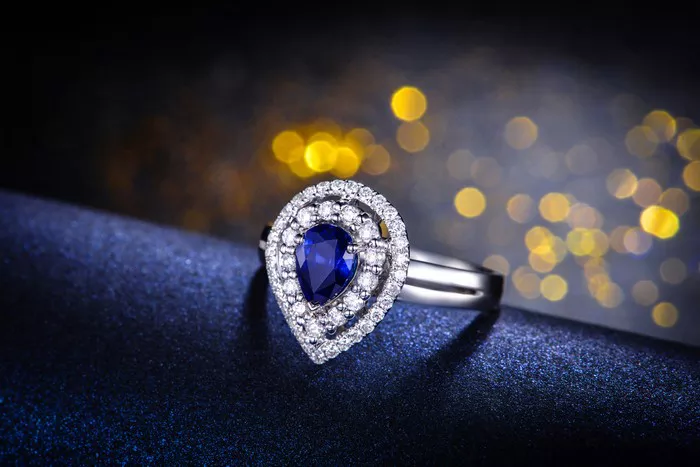Aquamarine, a gemstone renowned for its serene blue-green hues, has captured the hearts of many for its tranquil beauty and symbolic meanings. Often associated with the ocean, aquamarine rings serve as elegant accessories that complement any outfit, making them a popular choice for jewelry enthusiasts. However, one question often arises among those considering purchasing or owning an aquamarine ring: do aquamarine rings fade over time?
Introduction to Aquamarine
Aquamarine belongs to the beryl family of minerals, which also includes emeralds, morganites, and heliodors. Its name, derived from the Latin words “aqua” (water) and “marina” (sea), aptly describes its captivating ocean-like color. This gemstone has been admired for thousands of years, with ancient civilizations like the Egyptians and Romans attributing mystical properties to it. In fact, the ancient Egyptians believed aquamarine to be the stone of the sea goddess Isis, while the Romans associated it with Neptune, the god of the sea. Sailors also valued it as a talisman for safe travels over water.
Aquamarine’s color ranges from light blue to deep blue-green, with the most valuable stones exhibiting a rich, saturated hue. The color is a result of trace amounts of iron trapped within the beryl crystals during their growth. The gemstone’s hardness on the Mohs scale ranges from 7.5 to 8, making it durable enough for everyday wear as jewelry. Aquamarine is found in various parts of the world, including Brazil, Madagascar, Pakistan, and the United States. Brazilian aquamarines are particularly sought after for their deep blue color and clarity.
Durability and Stability of Aquamarine
One of the primary concerns when considering gemstone jewelry is its durability. Aquamarine’s hardness and chemical stability make it a suitable choice for rings and other types of jewelry. Unlike softer gemstones, aquamarine is less prone to scratches and abrasions, which can significantly affect its appearance over time.
Aquamarine is also relatively stable when exposed to common chemicals and environmental factors. It does not react with acids or bases, making it resistant to damage from everyday household cleaners and personal care products. However, like any gemstone, aquamarine should be handled with care to avoid sudden impacts or exposure to extreme temperatures, which could cause cracks or fractures.
Factors Affecting Aquamarine’s Color Stability
Despite its durability, aquamarine’s color stability can be affected by several factors. One of the most significant is exposure to heat. High temperatures can cause the gemstone’s color to fade or change over time. This is particularly true for aquamarine that has undergone heat treatment to enhance its color and clarity. Heat treatment is a common practice in the gemstone industry and can intensify the gemstone’s blue tone and remove any visible inclusions, resulting in a more vibrant and appealing appearance. However, prolonged exposure to heat can reverse these effects, causing the gemstone’s color to diminish.
Ultraviolet (UV) light is another factor that can affect aquamarine’s color stability. Prolonged exposure to UV light can cause the gemstone’s color to fade gradually over time. This is why it’s essential to store aquamarine rings in a cool, dark place when not in use to minimize exposure to these harmful rays.
Caring for Aquamarine Rings
To ensure the longevity and beauty of your aquamarine ring, proper care and maintenance are crucial. Here are some tips to help you keep your gemstone in pristine condition:
Regular Cleaning: Clean your aquamarine ring regularly using a soft cloth and warm water. Avoid using harsh chemicals or abrasive cleaners, which could scratch the gemstone’s surface. You can also use a mild detergent if necessary, but ensure it is diluted and rinse the ring thoroughly after cleaning.
Avoid Sudden Impacts: Handle your aquamarine ring with care to avoid sudden impacts or drops, which could cause cracks or fractures. Store it in a soft cloth or jewelry box to protect it from scratches and other damage.
Protect from Heat and UV Light: Store your aquamarine ring in a cool, dark place to minimize exposure to heat and UV light. This will help maintain its color and clarity over time.
Professional Maintenance: Consider taking your aquamarine ring to a professional jeweler for regular inspections and maintenance. They can check for any signs of wear or damage and provide recommendations for further care.
Popular Aquamarine Ring Styles and Settings
Aquamarine’s serene color and calming energy make it a popular choice for engagement rings and other types of jewelry. Here are some popular aquamarine ring styles and settings to consider:
Solitaire Settings: A solitaire setting features a single aquamarine gemstone mounted prominently on a band. This style highlights the gemstone’s beauty and is perfect for those who prefer a minimalist look.
Halo Settings: A halo setting surrounds the aquamarine gemstone with a circle of smaller diamonds or other gemstones. This setting adds sparkle and can make the central gemstone appear larger and more vibrant.
Vintage and Antique Styles: Vintage and antique aquamarine rings often feature intricate designs and settings that add a timeless elegance to the gemstone. These styles are perfect for those who appreciate classic and unique jewelry designs.
Three-Stone Settings: A three-stone setting features three gemstones mounted on a band, usually representing the past, present, and future. This style is popular for engagement rings and can symbolize eternal love and commitment.
Conclusion
In conclusion, aquamarine rings are a beautiful and durable choice for jewelry enthusiasts. While their color stability can be affected by factors such as heat and UV light, proper care and maintenance can help maintain their beauty and value over time. By following the tips outlined above and choosing a reputable jeweler for your aquamarine ring, you can ensure that your gemstone remains as stunning and vibrant as the day you first purchased it.
Related topic:
- Finding the Perfect Art Nouveau Aquamarine Ring: A Buyer’s Guide
- Aquamarine Engagement Rings: Pros, Cons & Alternatives to Consider
- How Much Is Princess Diana’s Aquamarine Ring Worth?


